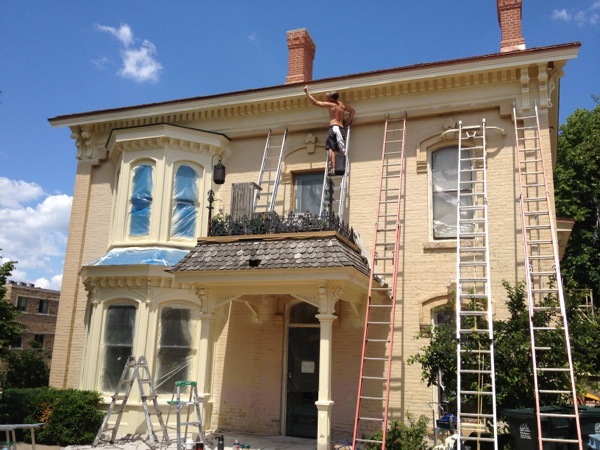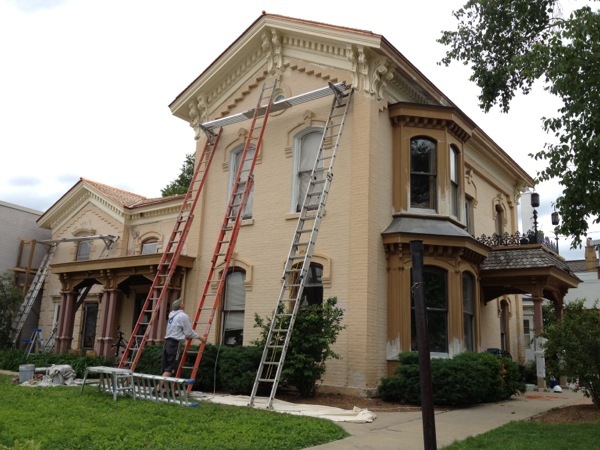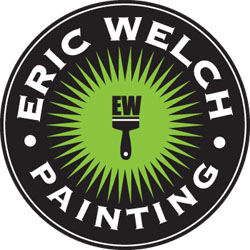Soffits and Fascia
Priming, Caulking and Painting Soffits and Fascia on Downtown Madison Exterior.
Eric Welch Painting sprayed and back brushed an oil based primer from Hallman/Lindsey. The surface is ready for primer only after it has been scraped extensively. Be aware of lead paint, especially on older building.
Then, we applied the caulk. A lot of caulk. Over 90 tubes of caulk were used on this project to fill gaps and cracks.
Now, it is time for the first coat of paint. We decided to go with Benjamin Moore's Aura for it's excellent application and the fact that it is a 2-1 primer and paint. We were going to skimp on nothing with this project and are expecting many years performance.

The first coat was applied with a sprayer and then backbrushed. The painter, above, is brushing in the fascia that was not sprayed. Below, is the application of the second coat.

The finished product is remarkable. We put many man hours into this project and am looking forward to seeing it again and again over the years. Eric Welch Painting takes pride in it's work.


 Eric Welch
Eric Welch
